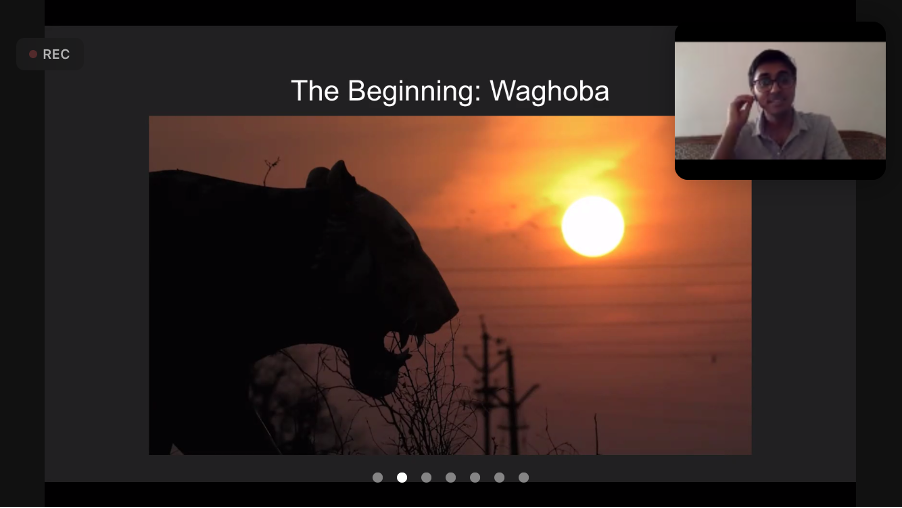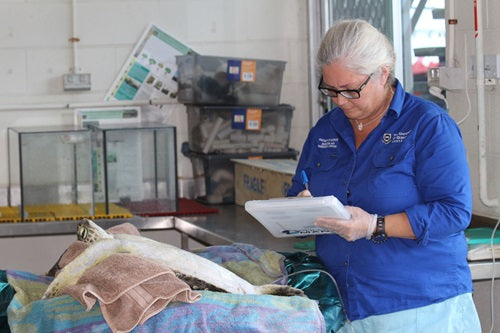
What does it take to coexist with nature? (by Kathleen)
Some may know this, but many have forgotten - in Singapore, we live in the remnants of a Big Cat era. Tigers and leopards once roamed lush forest that covered our island. But with habitat loss from the development of plantations, tiger attacks on humans rapidly escalated, initiating a prolonged hunting campaign rewarded by the government at that time. The last tiger, roaming around Choa Chu Kang, was shot and killed in 1930.
Big Cat attacks are a thing of the past in Singapore, but remain a very real problem for communities in other countries. On 10 April, wildlife filmmakers Malaika Vaz and Nitye Sood shared with us their experiences documenting the stories of ex-poachers, tribal communities and forest guards in India - the human ecosystem enabling the conservation of Asiatic Lions, Leopards and Tigers. While the tale of Singapore’s tigers ended in tragedy, rural communities in India have the solution to a sustainable coexistence with wildlife.

Nitye sharing their experiences filming Big Cats and the local communities living with them.
Where local ownership and awareness has been built, Big Cat populations thrive. Pride for local biodiversity takes centre stage. With a deep-rooted spiritual reverence for leopards in their culture, one particular community has lived harmoniously with leopards for more than 500 years. Attacks on their cattle (equivalent to having your car stolen) are an accepted consequence of cohabitation with Big Cats.

A photograph of Malaika with the local communities featured in their documentary series - Nat Geo Wild: Living with Predators.
Since finishing this 3-part documentary series, Malaika and Nitye have completed multiple projects for networks like National Geographic, Discovery Channel, Animal Planet and Netflix. But their work has not stopped at filmmaking. Where there is opportunity to create social and policy impact, they try their best to create tangible change. For Peng Yu Sai, a documentary on the manta ray trade, they partnered with conservation organisations to initiate a grassroots campaign studying manta rays in 9 coastal states in India. For Al Jazeera Earthrise: Wild Recovery, they hope to change negative public opinion on two bats and pangolins, the endangered mammals which have been investigated for links to COVID-19.

The filming of Peng Yu Sai, an investigative piece on the manta ray trade in India, was how our Zen instructor, Michelle, met the two filmmakers and taught them how to freedive.

Presently, human-wildife conflict may not seem as dire in Singapore as in India. However, reports of otters, wild boars and macaques attacking people have been increasing, due to the development of natural areas. With the frequency at which otters run around wreaking havoc on expensive fish nowadays, it might be hard to believe they had once vanished in Singapore for more than 30 years. We have been incredibly fortunate that some locally extinct species have come back.
In many ways, Singapore’s past is reflected in the present, but in the countries surrounding us. The expansion of cities and agriculture is an ever-increasing threat to wildlife and their habitats. As a small island, we experienced the consequences of this expansion faster and earlier.
In our interconnected world, our beliefs and consumption patterns have the power to drive habitat destruction, locally and in other parts of the world. The way we view conservation and our role in it must radically change to be able to coexist with wildlife. Local ownership of biodiversity is essential for humans everywhere to coexist with biodiversity. To do this, we must educate ourselves and others, and be empowered to take action.
Watch the full talk on the Zen Youtube Channel, and support Untamed Planet Productions! Their works and where the platforms you can watch them on are found at their website.
Wondering how to start making a change? Arrange a beach clean-up with your friends, or keep a look out for Zen Freediving’s next clean up activity. Follow our Instagram and Facebook for more updates.
If you want to learn more about Singapore’s local environmental history, visit the Human X Nature exhibition at the National Library Building.
Tags: documentary, environmental history, marine conservation, neocolonialism, Singapore, wildlife filmmaking


